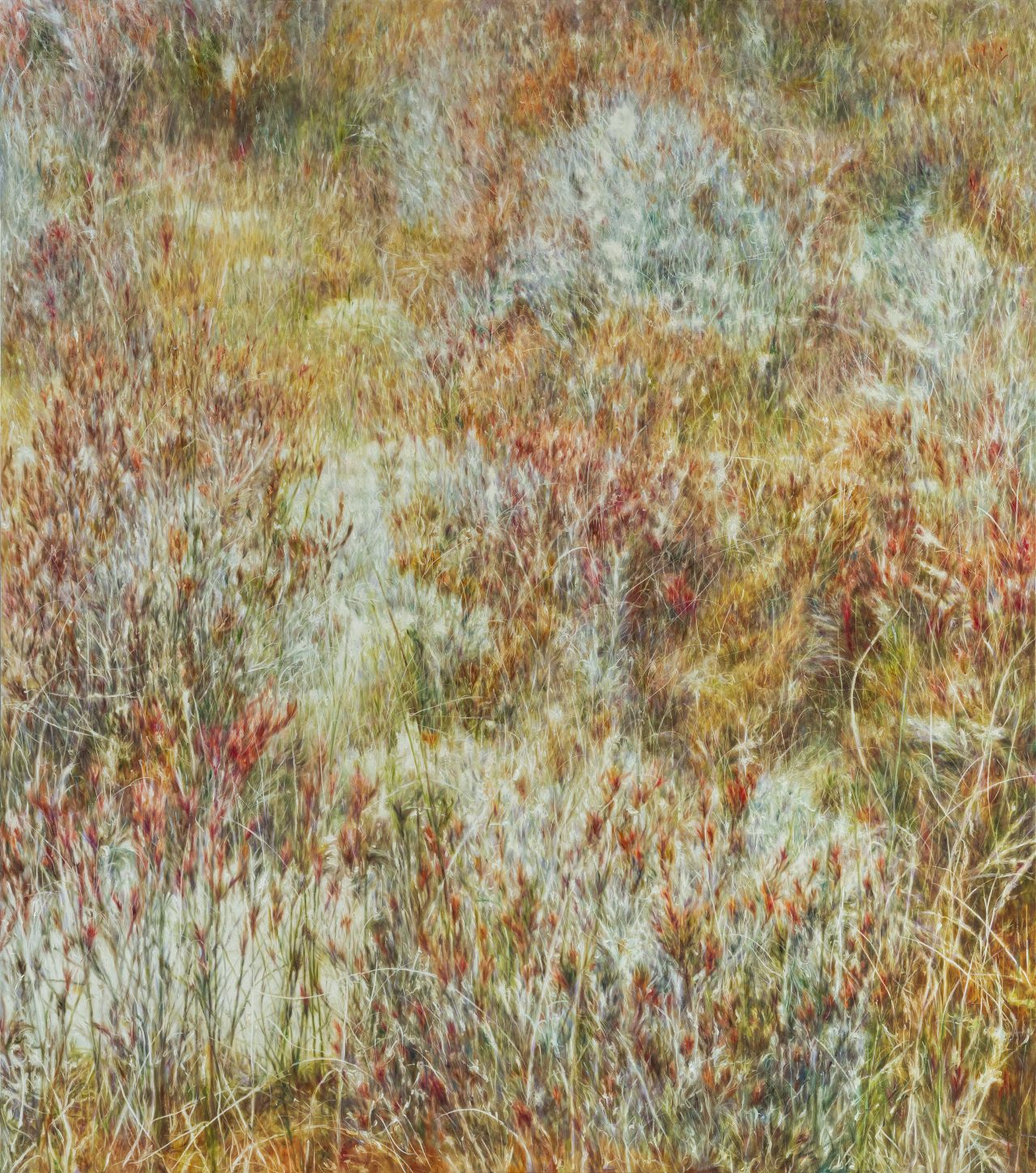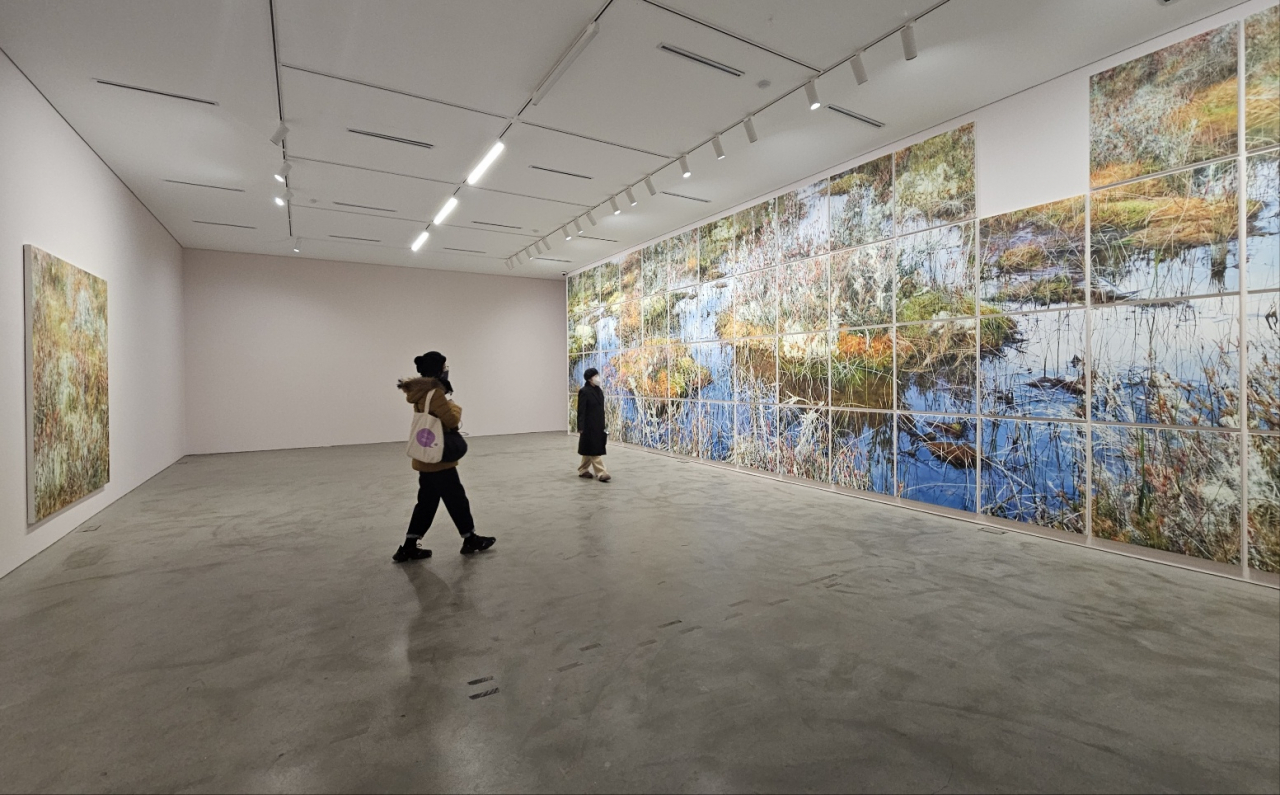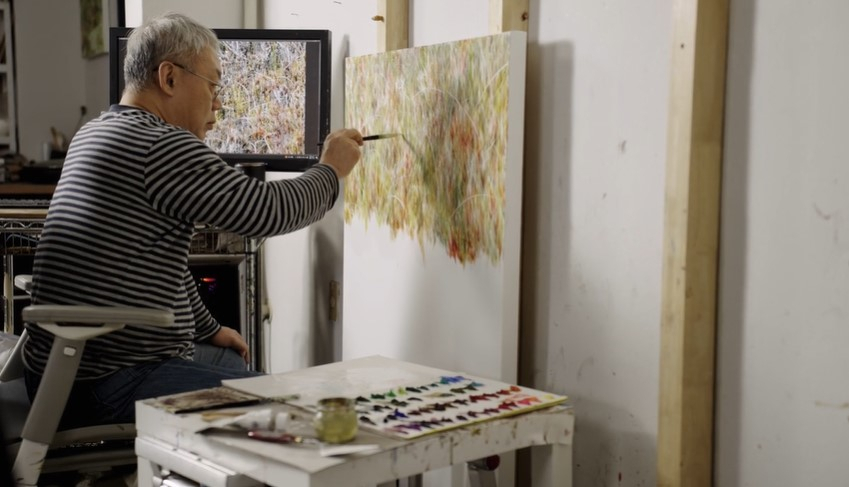[Herald Interview] Lee Kwang-ho paints to learn his desires
By Park YunaPublished : Jan. 14, 2024 - 18:08

Numerous painstaking depictions of each blade of grass, flower and plant fill 59 canvases that are pieced together to create a complete work that is more than 12 meters long and fills the wall from floor to ceiling.
It’s a rare experience to feel awe while standing in front of an artwork, but Lee Kwang-ho’s large-scale painting of a New Zealand wetland at Kukje Gallery is overwhelming.
Lee could not recall how many brushes he has at his studio when asked during an interview with The Korea Herald on Jan. 4 at Kukje Gallery in Samcheong-dong, central Seoul.
“I think I spend much more money on brushes than paints,” Lee said.

His third exhibition at the gallery, titled “Blow-up,” runs until Thursday. The hyperrealism artist showed paintings of brush environments in forests and cacti at his previous exhibitions in 2014 and 2010 at the gallery.
He encountered wetlands while traveling New Zealand and decided to paint the landscape throughout the 60 canvases he made himself.
But, unlike before, the hyperrealistic portrayal is not quite complete -- intentionally so. Lee left an empty space in the grid of his paintings to encourage viewers to contemplate the piece.
This last piece, which is on the opposite wall, would not fit the empty spot (in the grid), as its size is about six times bigger than the other pieces, matching the title of the exhibition with its scale.
“I split the landscape into 60 pieces so that I could free myself from the thought of reenacting the landscape as I focused on each piece,” Lee said.
The artist said he created canvases for the paintings shown at the exhibition. There are five types of canvases based on the types of fabrics and how they were woven. Depending on the types of canvas, the paintings turn out differently, he said.
“I consider a canvas as a broth, because the painting turns out to be different on different types of canvases, just as the food gets different depending on the broth,” he said.
Lee, born in 1967, has focused on hyperrealism since his early career. He said he was not sure why, but that it was probably because of the “instinctive characteristics" of his eyes.

Pointing to a bell on a table that is used to call a waiter at a cafe, he said “When I see this bell, I would remove the meaning of it and take it as an object by itself, which looks round and white and so on."
“Each artist sees things differently with their eyes. For the same object, some might see it more conceptually, and I just see what my eyes see,” he said,
As he gets older, Lee said his paintings have also become slightly different. Lee said that he sometimes surprises himself when looking at paintings from his early career. As a painter, Lee said he gets to learn about himself -- understanding his desires and the changes in himself.

“I get to learn what type of person I am through my work. I get to think about my desires constantly and think about myself, which I think is a privilege of an artist. I tell this to my students at college. Even if you do not get to be famous or earn a lot of money as an artist, if you get to learn about yourself better though your work, that is something you will be satisfied with,” he said.
Lee is currently a professor of Western painting at Ewha Womans University's College of Arts and Design.




















